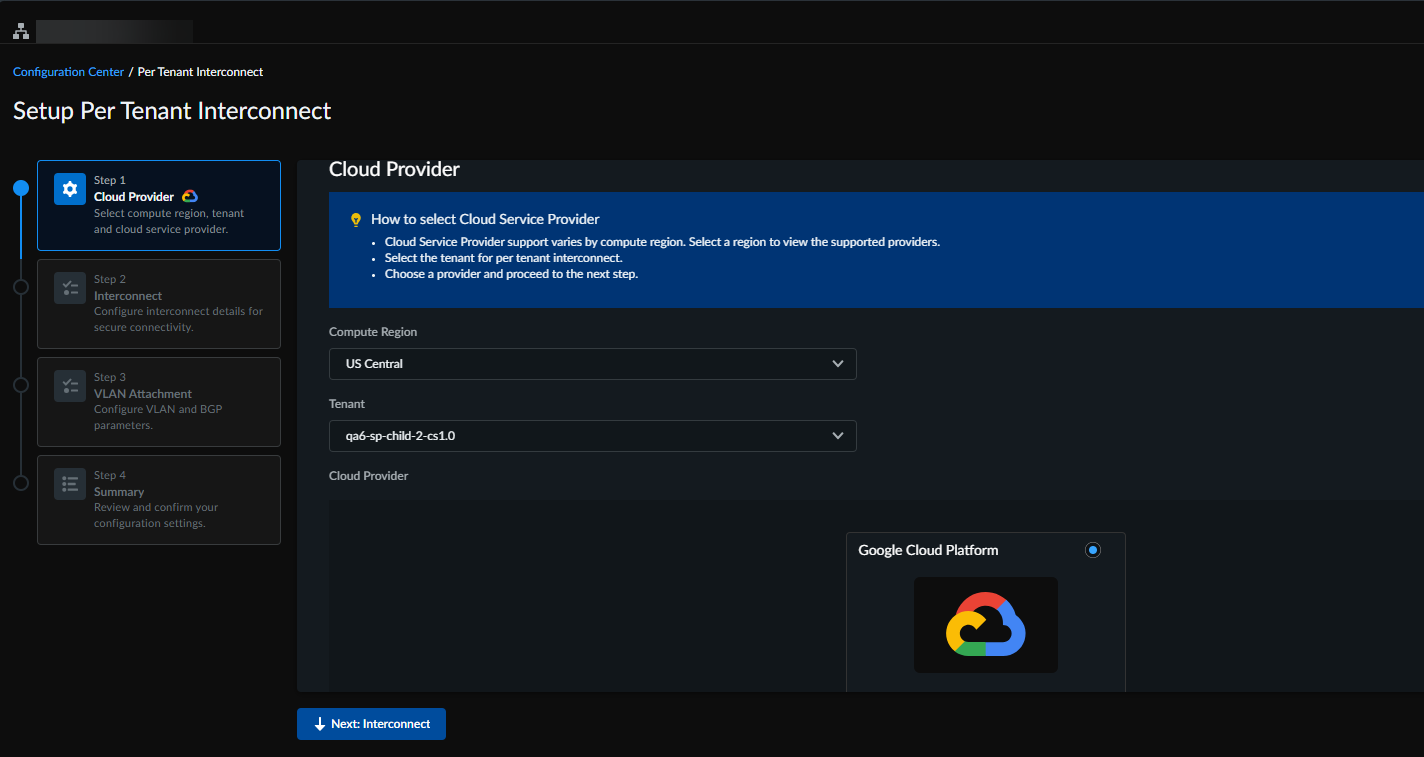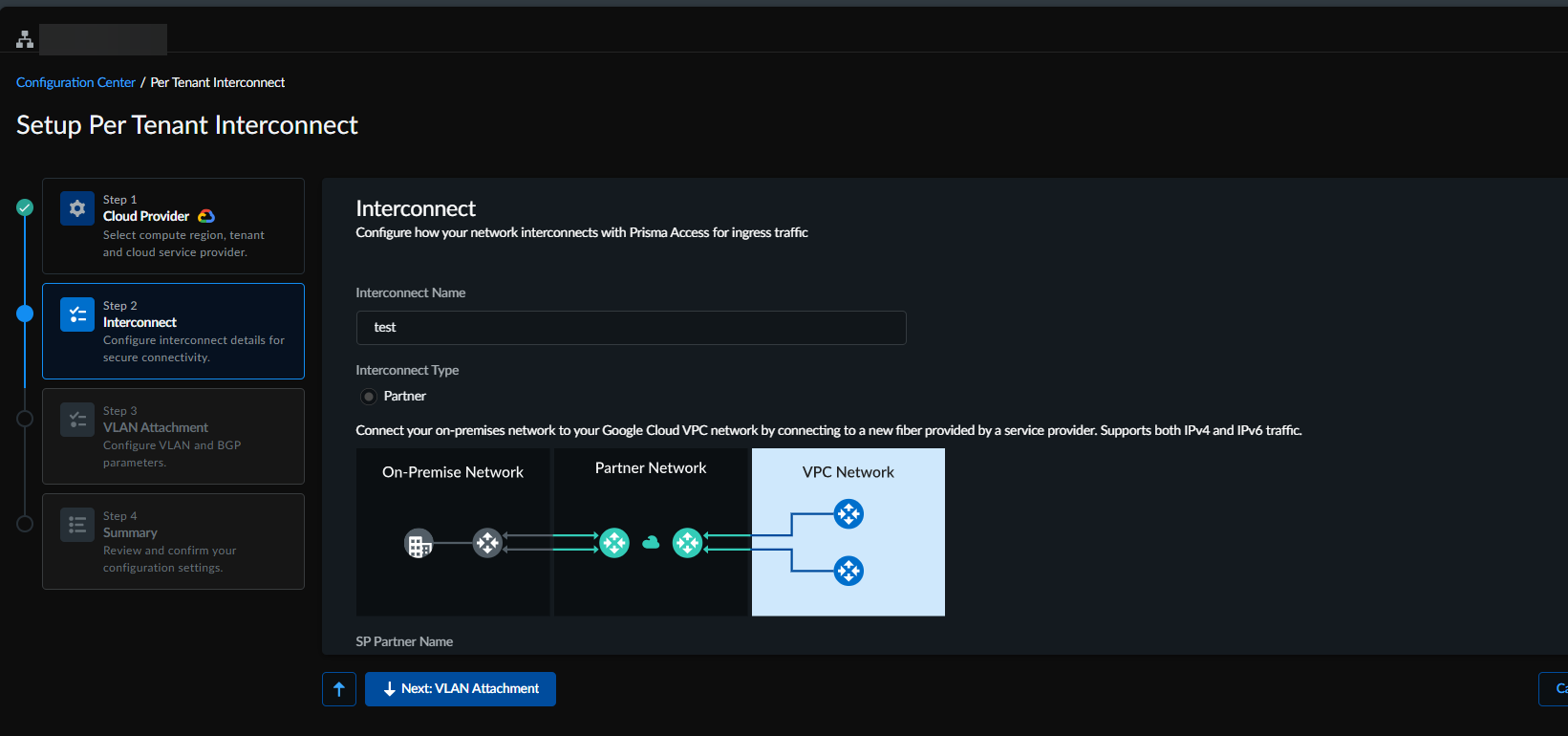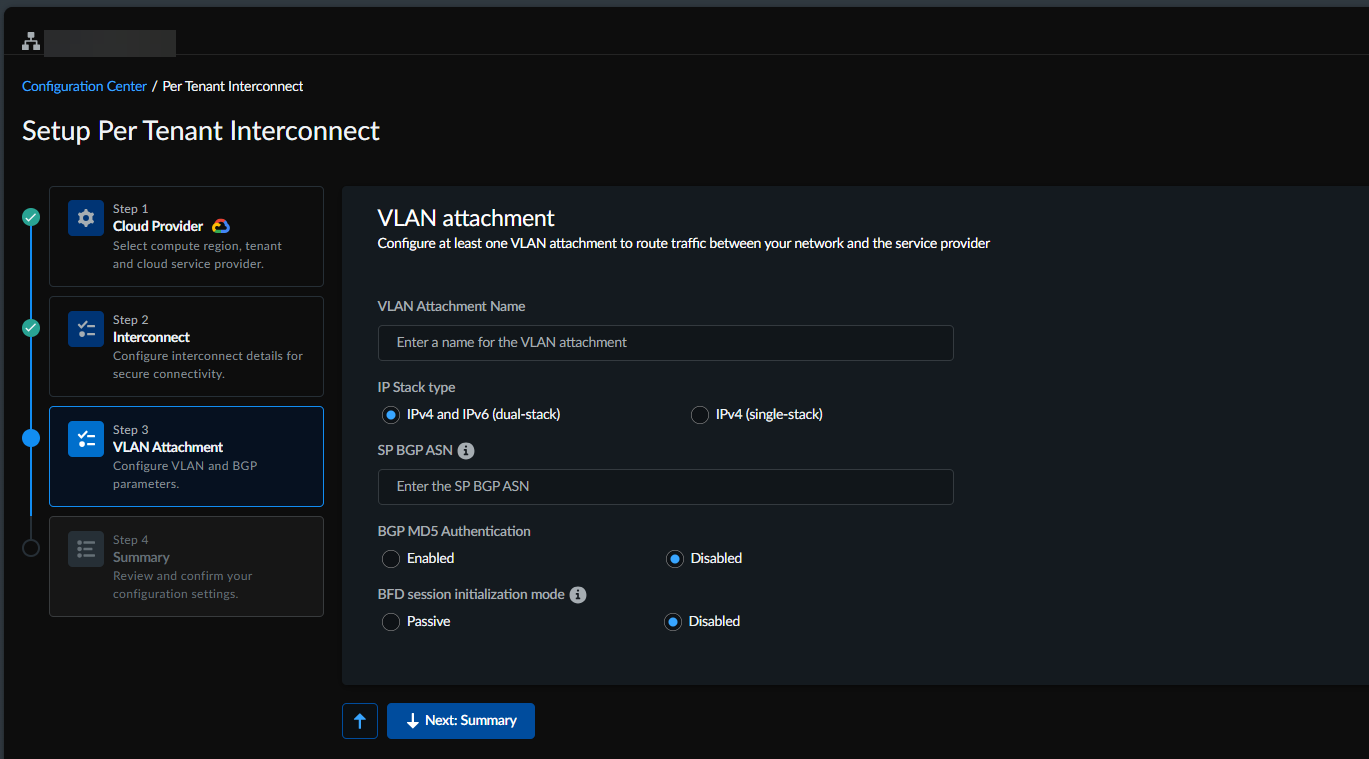Configure Per-Tenant Interconnect
Table of Contents
Expand all | Collapse all
- Strata Multitenant Cloud Manager
- First Time Setup
-
- Monitor Status of Services through the ASC Support View
- Monitor Performance of Tunnel Status through the ASC Support View
- Monitor Performance of Auto Scaling through the ASC Support View
- Monitor Performance of Throughput through the ASC Support View
- Monitor Performance of the System through the ASC Support View
- View Licenses through the ASC Partner Portal
- View Status of Upgrades through the ASC Support View
- Manage Multitenant Reports
Configure Per-Tenant Interconnect
Explains how to configure per-tenant interconnect
| Where Can I Use This? | What Do I Need? |
|---|---|
|
|
A per-tenant interconnect provides a dedicated, unique connection for each tenant,
ensuring strong traffic isolation and enhanced security. This setup allows you to
apply tenant-specific routing and security policies, making it ideal for
multi-tenant environments or scenarios with strict security and compliance
requirements, while enabling granular management and consistent performance for each
tenant.
This is supported only on GCP.
To set up a per-tenant interconnect, perform the following:
- Access the Strata Multitenant Cloud Manager and select Configuration Configuration Center Set up Per Tenant Interconnect.Configure the Cloud Service Provider:
- Select the Compute Region to view available or applicable Cloud Service providers.
- Select the Tenant.
- Select the Cloud Service Provider, such as GCP, and proceed to the next step.
![]() Configure Interconnect:
Configure Interconnect:- Enter a unique Interconnect Name.
- Enter a unique SP Partner Name.
- Enter a valid email address for the partner.
Currently, only partner interconnect type is supported which is selected by default.![]() Configure at least one VLAN attachment to route traffic between your network and the service provider. You can configure additional VLAN attachments after creating the interconnect.
Configure at least one VLAN attachment to route traffic between your network and the service provider. You can configure additional VLAN attachments after creating the interconnect.- Enter the VLAN Attachment Name.
- Select the IP Stack Type: IPv4(single-stack) or IPv4 and IPv6(dual-stack)
- Specify the public or private Border Gateway Protocol (BGP) Autonomous System Number (ASN) to establish peering for route exchange between the service provider network and the public cloud.
- Enable BGP MD5 Authentication to use the hash algorithm, or Disable it to use plain text authentication.
- BFD Session Initialization mode for BGP peer: Passive or Disabled.
- Passive: The cloud router will wait for the peer router to initiate the BFD session. For the router to wait, you must specify the BFD Transmission Interval, BFD Receive Interval, and BFD Multiplier.
- Disabled: BFD will be disabled for this BGP peer.
![]() Review the configuration summary and Create Interconnect.
Review the configuration summary and Create Interconnect.



